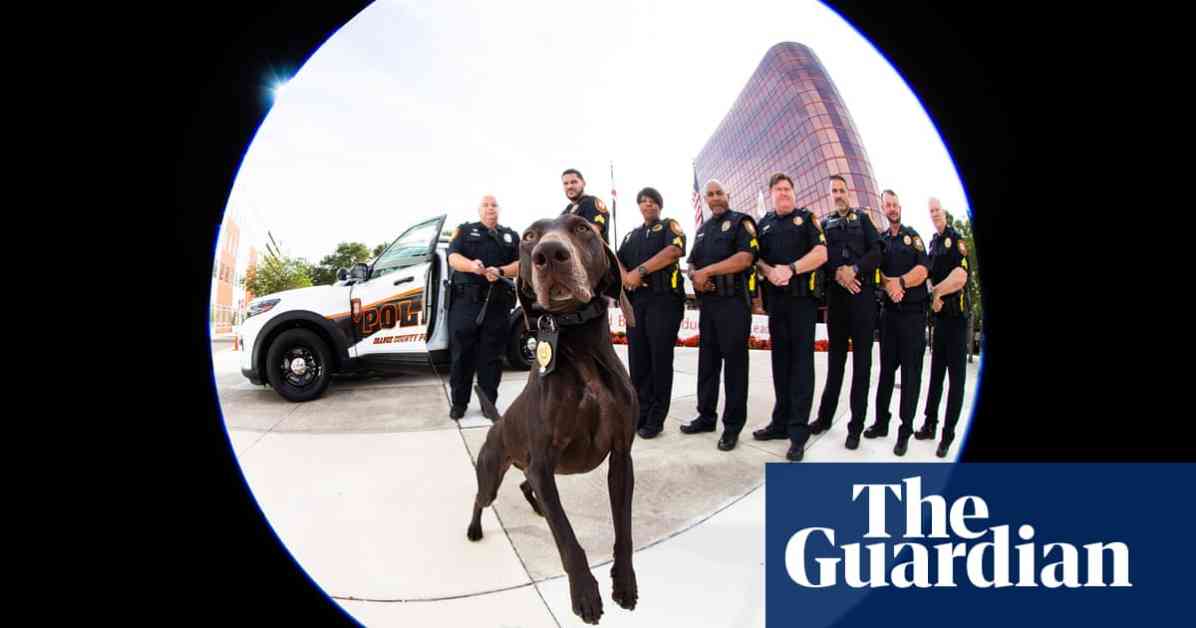As the new school year kicked off in Tennessee, students in the Wilson County school district near Nashville were introduced to their newest school employees, Zander and Zena. These black Labrador dogs were not just ordinary pets; they were on a mission to protect the school community from gun violence and mass shootings in a country where firearms are prevalent.
Bart Barker, the public information officer for the Wilson County Sheriff’s Office, emphasized the importance of being proactive rather than reactive when it comes to school safety. Wilson is just one of many school districts across the United States that have started using gun-sniffing dogs to enhance security measures on campus.
Rising Gun Violence in Schools
Over the past three years, there has been a significant increase in gun violence incidents at schools nationwide, from elementary schools to college campuses. According to an analysis by CNN, the years 2021, 2022, and 2023 all witnessed record-breaking numbers of gun-related incidents occurring on school property.
In response to this alarming trend, more schools have begun implementing enhanced safety protocols. Frank Cilurso, the co-founder of 3DK9 Detection, a company that provides weapon-detecting dogs to schools, noted a surge in the number of schools seeking to utilize these animals in recent years. The effectiveness of these dogs in identifying threats and ensuring the safety of students and staff has been widely acknowledged.
The Role of Gun-Sniffing Dogs
Gun-sniffing dogs are trained to detect firearms, ammunition, ammunition cases, post-blast residue, smokeless powder, gun oils, and gun lubricants. Billy Woods, the sheriff in Marion County, Florida, highlighted the importance of utilizing these dogs in school settings to combat the increasing prevalence of gun violence, particularly on school campuses.
In districts where gun-sniffing dogs are employed, typically one or two police dogs are shared among schools within the district. These canines, along with their handlers, conduct regular patrols and random searches at each school to deter potential threats.
Erik DeAngelis, a police corporal in Marion County, shared how the introduction of gun-sniffing dogs in 2022 had significantly enhanced safety measures in response to school shootings nationwide. Since the dogs were deployed, no firearms have been discovered on school premises in the district, a marked improvement from previous years.
Building Trust and Connection
In addition to bolstering security measures, gun-sniffing dogs have helped foster positive relationships between law enforcement and school communities. Students are more inclined to engage with officers and share information, leading to open and meaningful conversations that were previously uncommon.
Brian Howarth, a K9 sergeant in Orange County, Florida, and the handler for Coco, a gun-detecting dog in the school district, emphasized the positive impact these animals have had on students. Through interactions with Coco, students who were typically reserved or introverted were more willing to communicate with staff and authorities.
Enhanced Safety Measures
While gun-sniffing dogs play a crucial role in school safety, they are just one component of a comprehensive approach to security. School districts have implemented a range of measures, including student resource officers, enhanced mental health services, video surveillance systems, metal detectors, anonymous reporting apps, computer monitoring programs, and more.
In Washoe County, Nevada, a gun-detecting dog named Astro joined the school police force last year. Although Astro successfully detected ammunition and magazines on school property, there were no firearms found. Seana Baker, the school district’s police deputy, praised the deterrent effect of the dog, noting that just the presence of a gun-sniffing dog had made a significant difference in maintaining a safe environment.
Social and Emotional Benefits
Beyond their role in detecting weapons, gun-sniffing dogs offer additional social and emotional benefits to the school community. Baker highlighted the positive impact of engaging with students through the presence of a dog, emphasizing the invaluable connections and relationships that are formed as a result.
However, funding for K9 programs can be a challenge for some departments, leading to inconsistent financial support. Baker stressed the importance of continuous funding to sustain these programs and recommended the use of gun-sniffing dogs in every school district where possible for the transformative impact they can have on students’ lives.
In Conclusion
Gun-sniffing dogs have become valuable assets in enhancing school safety and security measures in response to the increasing prevalence of gun violence in educational settings. These animals serve as powerful deterrents, fostering positive relationships between law enforcement and school communities while providing social and emotional benefits to students. With a multi-layered approach to safety that includes gun-sniffing dogs, schools are better equipped to protect their students and staff from potential threats.

